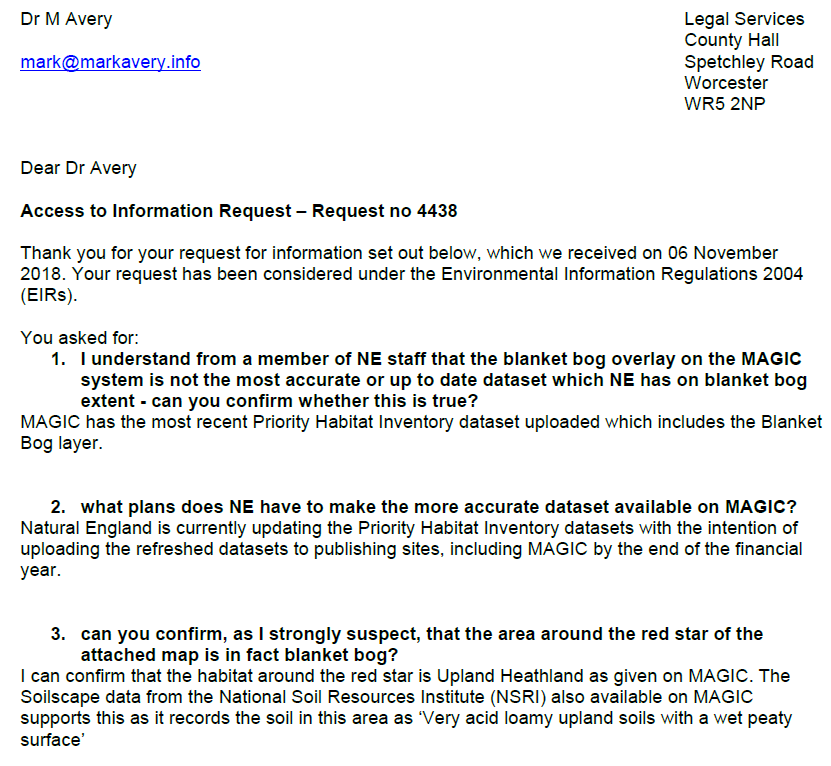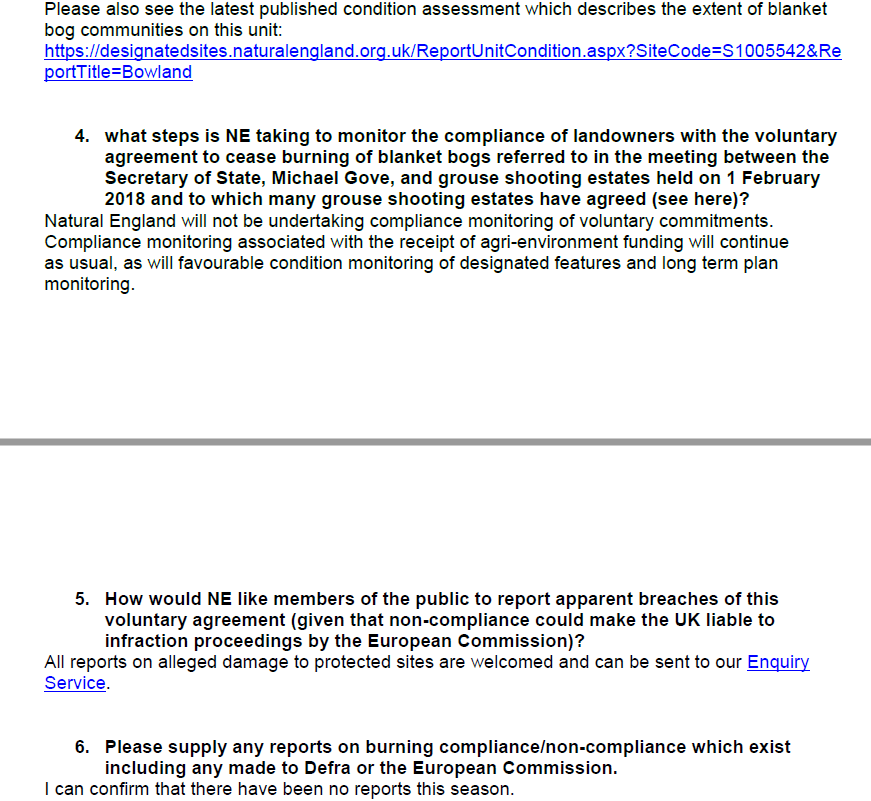

Here is the link to the NE Enquiry Service.
On the face of it, it looks like I may have been misinformed, or, in other words, I was wrong.
But, it pays to check the wording carefully. Answer 2 seems to say that there is a more accurate or up to date dataset being finalised. Who knows, it may already be finalised as far as I know. And who knows, it may show that the area of Bowland under question is indeed blanket bog. But if it does, then NE aren’t going to let that cat out of the bag until the end of the Financial Year.
Answer 3, on the face of it, looks like the area in question may not be blanket bog at all.
I suppose we may have to wait and see when the ‘refreshed’ data are made available. Here is a prediction – the ‘refreshed’ dataset will appear later than the end of the financial year and when it does, it will show the area under question here as blanket bog. That is obviously just a guess on my part but that is my guess. What odds would you givce me on that punt? And I will tell you on this blog whether my guess is right or not. Let’s just imagine that it is right – will that mean that NE has answered this question inaccurately?
Meanwhile I will put on my thinking cap about other ways to get at this issue.
Your next question is perhaps to ask Q3 again, specified in terms of the most recent dataset potentially available to inform PHI, whether or not that dataset has yet been used to do so, updating PHI. The possible answers are (a) same answer as before or (b) protected under FOI as information to be published idc or (c) interesting new answer to the question.
Could someone (a reader of this blog?) who lives locally go and measure the peat depth with a bamboo cane marked at 0.5m? If peat depth is >0.5m then it is blanket bog.
This would be very worthwhile. It probably would be necessary to make several measurements, however. I’d be happy to host, either on my website, or a new website, such measurements taken to verify the MAGIC data. A protocol, if there is not one already, would be necessary. I would think the minimum equipment would need to be a smartphone (no signal necessary) to verify location using a suitable app, take photos for evidence and the depth readings. A useful addition to walk on a moor, if one has looked up the MAGIC information already.
You may remember Mark that when you originally blogged about this area I said I didn’t think it was blanket bog.
There is a more accurate map available and I’ve been looking at sites with this in mind. I think the narrative here needs to be expanded and clarified – common sense tells us any burning is bad. Just look at increased flood risk and poorer water quality, in these cases peat depth doesn’t come into it. When a moor has been burnt for 100 years it might not look like blanket bog but has the potential to be restored. And there are several differing definitions of what might reasonably be defined as blanket bog. Lots of sphagnum on wet peat would look like blanket bog to most people even if the peat is shallow. Then again a dry frequently burnt moor of deep peat could be reasonably described as degraded blanket bog. I know the RSPB case has made us all look at blanket bog but its not the full picture of what constitutes good management. I was at a meeting recently and heard that apparently NE are looking to rescind consents for rotational burning on deep peat by June 2019. In other words this would make Mr Gove’s voluntary agreement statutory on a case by case basis. An FOI might tell more. But of course this doesn’t address the potentially massive loophole of conservation/restoration burning – however that is interpreted.